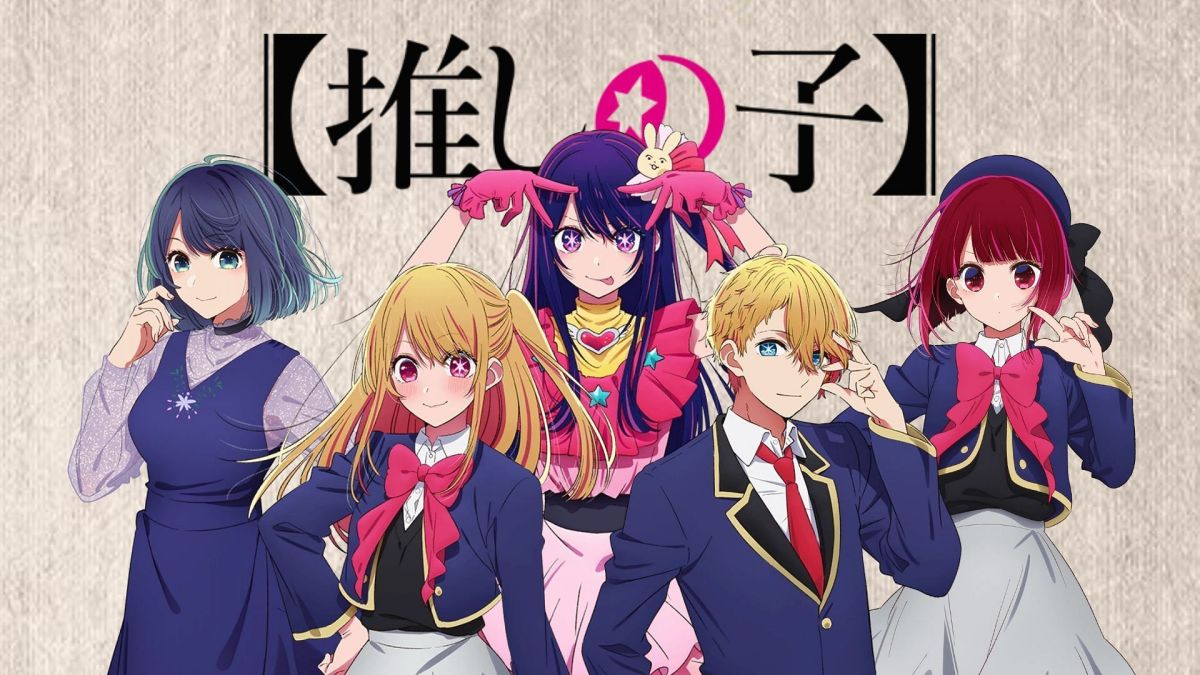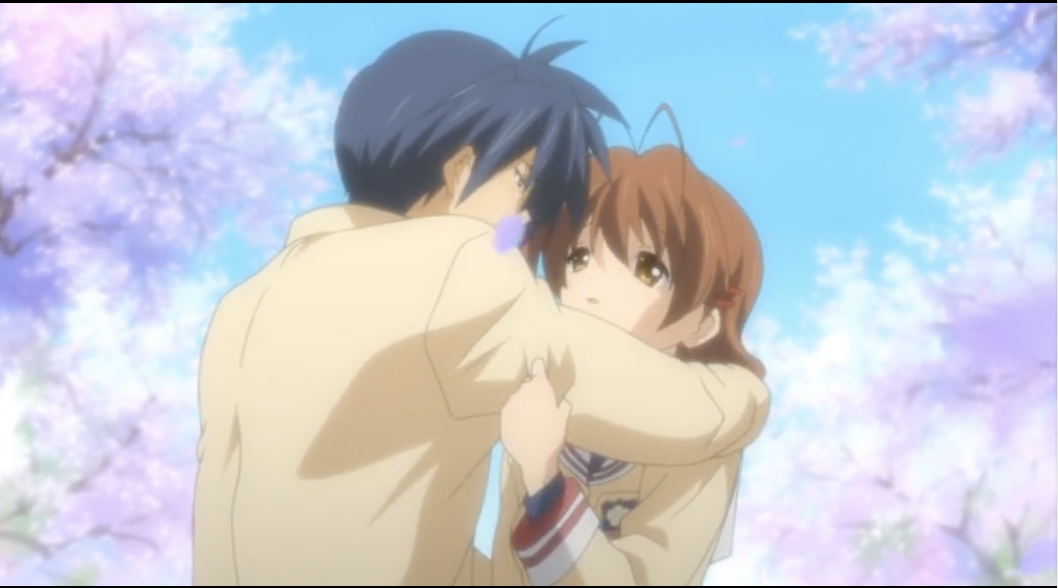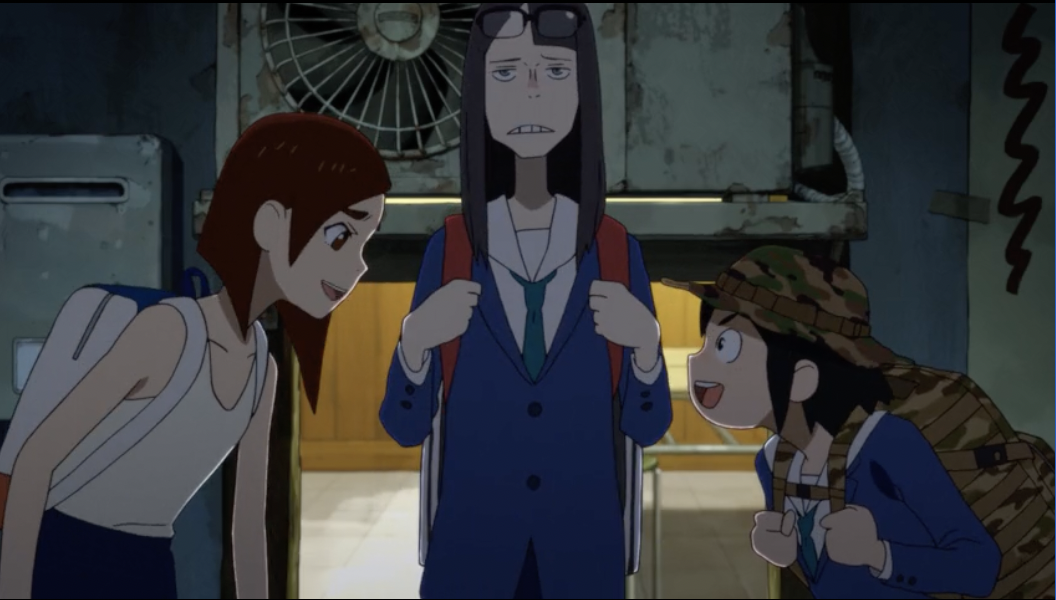Review: Oshi no Ko
Studio: Doga Kobo
Years aired: April 2023-June 2023 (season 1)
Some minor spoilers ahead, mostly for the prologue opening film.
AniB’s thoughts:
I had to think carefully for a while about this show before truly committing fully to this review. Oshi no Ko required thoughtful reflection between its unusual cinematic opening and the rest of the season that followed in tow, the immense amounts of hype and popularity that followed along with it as a seasonal release in 2023, and the pressure such expectations created not just for the series, but for me, the viewer and critic in this case. Such a phenomena is not an uncommon thing necessarily, but it does put more pressure on a writer in general when those words are meant to entertain and perhaps inform those who read them. And so I won’t bury the lede: Oshi No Ko is a very good series- but has some meat left on the bone to be called truly “great.”
Now there is nothing wrong with that context in particular, especially armed with the knowledge a season 2 is coming, so a number of plot threads still will have to see their resolution there. The second series to be adapted from Aka Akasaka (Kaguya-sama: Love is War), Oshi no Ko certainly comes with expectations- and off the bat the opening prologue movie is truly excellent, establishing an investment into the characters and the series, while choosing to focus through Aqua’s point of view on his life, unexpected reincarnation and the mystery of the charismatic individual he calls his mother: Ai, the star idol of the group “B Komachi”. It serves as a compelling entryway into what comes next and is as effective a hook as you’ll find with any series.
Ai is the character the mysteries and plot of the entire show at large revolve around. A talented rising idol star, Ai’s genuine allure was unmistakable as was her face, notable especially for her unusual star-shaped pupils. Behind the smiling public persona though was an individual unsure of herself, searching for love and spinning lies into her own truth as she made others happy but not herself. That said, she worked hard and was committed to her two children, who she believed greatly in. The mystery of the events that led to her death and her shrouded backstory, including the shadowy man who was the twins’ father, is at the center of Aqua’s narrative in particular, but it drives everything else as an undercurrent in the story.
Outside of the opening movie, episode 6 in particular stood out. Featuring a talented young stage actress named Akane, who was cast as part of a group of young actors and influencers for a romance dating reality show, she was struggling to gain popularity and felt spurned to try and take drastic measures. This episode is compelling but sobering about the dangers of internet social culture and the mental health and well-being of someone (in this case Akane) but the episode can be both upsetting and yet hopeful at the same time. It comes in a bit unexpectedly tonally so while alerting its existence is a minor spoiler, proceed with caution.
Overall, Oshi no Ko presents a well animated, interesting character drama set against the backdrop of the entertainment industry with an element of suspense and mystery. Unresolved plot threads still will hopefully find their resolution in a second season and on the whole, it accomplishes well what it sets out to do. You may be slightly disappointed if you’re expecting the greatest show of all time, but on its own merits and as a setup for more? I’ll gladly hop back in line for seconds.
Animation: One of the standout elements of the show, the level of detail is commendable. You feel a dramatic weight to movements by people in this series and their actions, falling in line with the deliberate way those in entertainment carry themselves. Character design is eye-catching and memorable and there’s even noticeable variation in outfits for the main characters. Action sequences have some good heft to them and the animation beyond just looking good actively enhances the overall presentation of the series.
4.5/5 points.
Characters:
Much of the show (and all of the prologue) is seen through the eyes of Aquamarine Hoshino (normally just called Aqua), a one-time doctor/idol otaku who died an untimely death while treating the idol Ai only to be reborn as one of her twins. Fully retaining his memory, knowledge and skills from his previous life, he is seen as precocious by those around him and after the events of the prologue, devotes his life to finding out everything he can about his mother- and the mysterious father who he nor twin Ruby knew. Possessing a natural gifted disposition towards acting despite his claims to the contrary, he’s masterfully talented in many regards and closely looks after his sister.
Ruby is also another reincarnation, this time of a little girl named Sarina who was one of the doctor’s patients. While sickly in that life, she introduced “B Komachi” and Ai to the doctor and fell in love with him, things that she never forgot. As Ruby, she retains her love for Ai, not just as a fan but as her daughter, and is steadfastly determined to follow in her mother’s footsteps as an idol. In contrast to her brother, she’s outgoing and optimistic and has a much more idealistic view of the world around her.
A famous one-time child actor, Kana Arima has been steeped in this world since she could talk. Possessing talent and experience in spades, she became smitten with Aqua at a young age after he came in and showed her up at a movie filming session. She remained impressed with him upon reuniting. Kana’s a very practical individual due to the many hard experiences she had after her child actor days and is slow to open up truly to people, preferring to guard herself closely (despite her talent.) She winds up playing a major role in particular after Aqua and Ruby meet her at the high school they enroll at.
Appearing a bit later into the season, MEM-cho is a well-known streamer who is originally introduced to Aqua through a dating show he lands a role in. Outwardly energetic, she shows great understanding and savvy of the industry and becomes an important connection overall for the Hoshino siblings.
There are many other supporting characters but a few worth noting, such as Miyako Saito, the one-time girlfriend of Ichigo Saitou (Ai’s original production manager/Strawberry Productions) who becomes the guardian and later essentially adoptive parent of the Hoshino twins as well as the lead production manager in the future. There’s also Akane Kurokawa, who I briefly touched on in my thoughts- who is a hard working, gifted stage actress. Many more characters exist in this cast which help flesh out this world but it’s best to discover them for yourselves if you haven’t watched the series- and if you have, you know how complex the chain of relationship webs can get.
The characters are arguably the greatest strength of Oshi no Ko given how strongly they drive the entire premise and intrigue of the show. There is more room for this cast to grow, but they are interesting to watch on screen and their interactions form a major driving focus for the viewer.
4.5/5 points
Story: A character-driven drama, this narrative weighs more if you wind up investing in these characters on the whole as interesting. Fortunately this show is able to accomplish that with a powerful hook and sets it convincingly enough with the continued interactions and chains of events that occur as a result. There are still unresolved plot threads that need to see their conclusion in a season 2 (which is coming) but the setup so far has been stellar and for arc-specific resolutions they often have compelling answers. A compelling setup indeed.
4/5 points.
Themes: This show has very mature themes, mostly revolving around personal presentation and mental image as well as the nature of the entertainment industry and its shiny exterior and grimy interior politics. There are also other compelling ideas woven in such as the decision to choose to give birth to illegitimate twins as an idol, commentary on the age of the internet and of course, some murder mystery stuff as well. However, despite these impressive themes there’s often some melodramatics attached to it and in some cases it could be interpreted as slightly heavy-handed in the most sensitive of moments. As a result, a bit more tact and development is needed for a truly outstanding score here.
3.75/5 points.
Intangibles: One of the biggest complaints I’d levy at this show is that it does feel like it could be shoehorned into being a period piece over time. It’s very “of the moment” (as in 2023) particularly on its views and exploration into the impact of the internet and social media, and while that’s highly relevant at this time, it remains to be seen how well those sections of the narrative will hold up over time. In general, the sound direction is good in this show and the brilliant opening prologue movie is a great tone-setter for the rest of the season. The OP and ED are also rather memorable both musically and visually. There is a full length English version of the OP on YouTube that’s worth checking out lyrically just to have a better idea into Ai’s mindscape.
3.75/5 points
Total 20.5/25 (82%): Oshi no Ko has several standout attributes but has elements that may date it quickly as time rolls on. However, the animation and characters along with some of the thematic plot bits in particular make the show worth exploring with a potential for greater payoff knowing a second season is on the way. A strong entry in its own anime release season, it’s a fine show that should appeal strongly to those who enjoy character dramas or human psychology, or for someone seeking a twist on the idol format.
Like what you see? Big fan of Oshi no Ko? Leave a comment!














